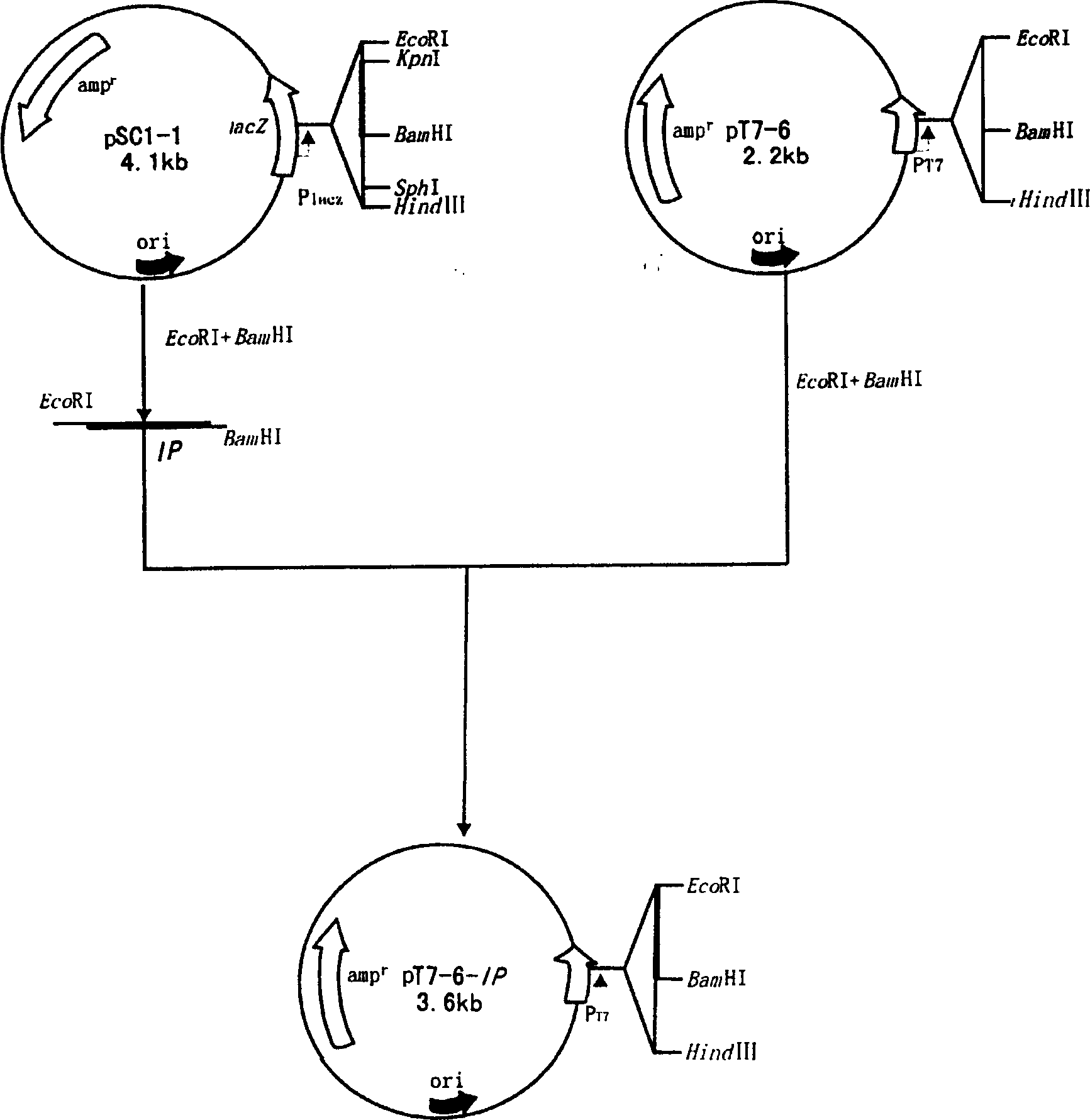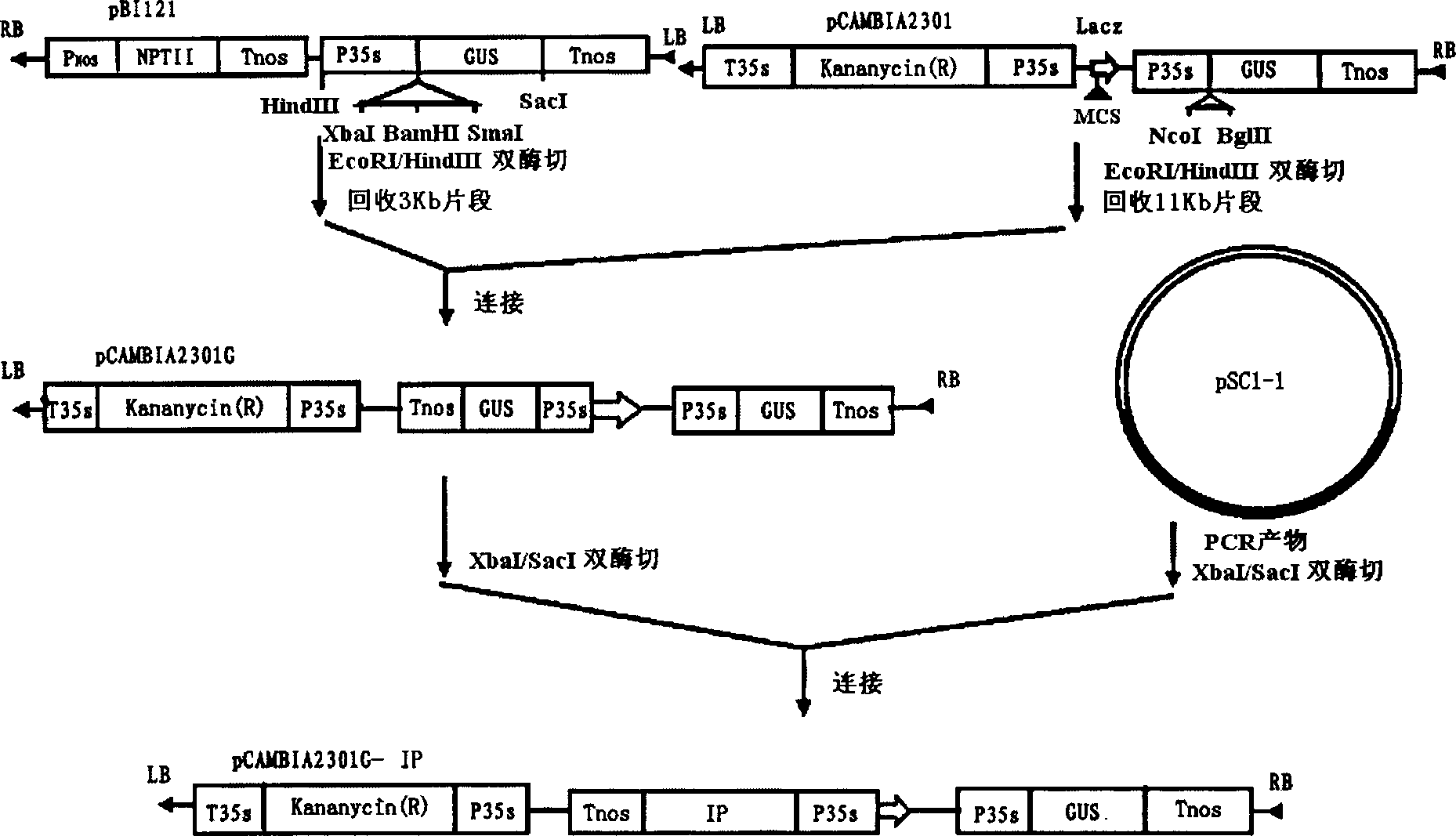Pseudomonas pseudoalcaligenes disinsection protein gene
A technology of insecticidal protein and insecticidal protein, applied in genetic engineering, plant gene improvement, peptide preparation methods, etc., to achieve the effect of increasing expression
- Summary
- Abstract
- Description
- Claims
- Application Information
AI Technical Summary
Problems solved by technology
Method used
Image
Examples
Embodiment 1
[0029] Isolation and Purification of Insecticidal Protein from Pseudomonas-like Pseudomonas
[0030] 1.1 Culture medium preparation
[0031] Inoculate Pseudomonas-like alcaligenes in broth medium (Zhou Deqing. Microbiology Experiment Manual [M], Shanghai Science and Technology Press, 1985), medium components (g / L): beef extract 5g, egg white 10g , NaCl 5g, pH 7.2. After culturing at 35°C for 12h, transfer to the same medium, 35°C, 120r / min, shaking culture for 36h for later use.
[0032] 1.2 Detection of Insecticidal Activity of Pseudomonas Alcaligenes Culture
[0033] The culture of Pseudomonas pseudoalcaligenes was centrifuged at 6000 g for 10 min at 4°C to obtain the bacterial culture supernatant and bacterial precipitate. The bacterial pellet was washed three times with deionized water and then homogenized. After the obtained homogenate was centrifuged at 10,000 g, the homogenate supernatant was collected, and its protein concentration was determined to be 43 mg / ml. Aft...
Embodiment 2
[0050] Cloning and prokaryotic expression of insecticidal protein gene of Pseudomonas pseudoalcaligenes and insecticidal experiment.
[0051] 2.1 Construction of Pseudomonas alcaligenes genome library
[0052] Genomic DNA of Pseudomonas pseudoalcaligenes was extracted by CTAB method, and then a small amount of genomic DNA was taken for Sau3AI enzyme digestion pre-experiment to confirm that the generated random DNA fragments were concentrated in 2-10kb. Sau3AI is partially digested, and the digested products are separated by 0.5% agarose gel electrophoresis, and 2-10kb fragments are recovered from the agarose gel. The pUC19 plasmid (Norrander, J. et al., Gene (1983) 26: 101-106) was used as the cloning vector, and the BamH1 site of the plasmid vector was used as the cloning site. When pUC19 was completely digested by BamH1 and transformed into a linear molecule, the 5' phosphate groups at both ends of the linear molecule were removed with calf intestinal alkaline phosphatase to ...
Embodiment 3
[0067] Insecticidal protein gene for alfalfa transformation and breeding of insect-resistant alfalfa
[0068] 3.1 Vector construction:
[0069] 3.1.1 Construction of vector pCAMBIA2301G
[0070] The construction process of the vector pCAMBIA2301G is shown in FIG. 2 . Firstly, the plant expression vectors pBI121 and pCAMBIA2301 were digested with EcoRI and HindIII. Then, recover pBI121 about 3Kb fragment, pCAMBIA2301 about 11Kb fragment, and use T 4 DNA ligase ligated to obtain the vector pCAMBIA2301G.
[0071] 3.1.2 Construction of vector pCAMBIA2301G-IP
[0072] The vector pSC1-1 was used as a template to PCR amplify the Pseudomonas pseudoalcaligenes insecticidal protein gene fragment, which was digested with XbaI and SacI to recover a 1.4kb fragment. At the same time, the vector pCAMBIA2301G was also digested with XbaI and SacI to recover a fragment of about 12Kb, and then ligated with the digested Pseudomonas-like insecticidal protein gene fragment to obtain the expres...
PUM
 Login to View More
Login to View More Abstract
Description
Claims
Application Information
 Login to View More
Login to View More - R&D
- Intellectual Property
- Life Sciences
- Materials
- Tech Scout
- Unparalleled Data Quality
- Higher Quality Content
- 60% Fewer Hallucinations
Browse by: Latest US Patents, China's latest patents, Technical Efficacy Thesaurus, Application Domain, Technology Topic, Popular Technical Reports.
© 2025 PatSnap. All rights reserved.Legal|Privacy policy|Modern Slavery Act Transparency Statement|Sitemap|About US| Contact US: help@patsnap.com


